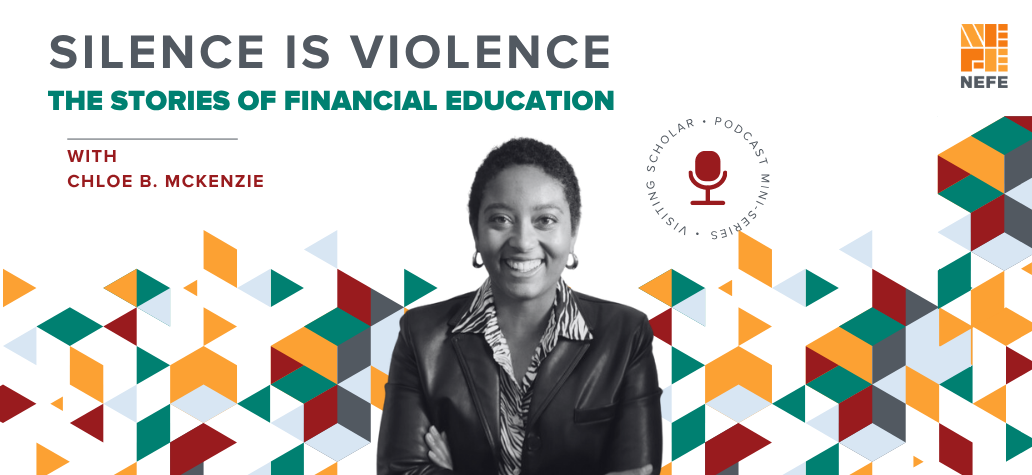Part of my methodology is to follow the questions as they come up. Nothing about my process—or trauma, for that matter—is linear. So, as I continued to think about how we measure indicators of financial trauma (like nonparticipation, as you will see in this piece), I meandered through the literature, the narratives of my respondents and my own thoughts.
It was also helpful to remind myself of my thesis: The wealth gap exists for a number of reasons, one of which is because of pervasive financial trauma. One way to demonstrate that financial trauma is pervasive is to measure the breadth and depth of nonparticipation among populations who participate (or attempt to) in our broader national economy.
Meredith Schramm-Strosser, an attorney focused on employment and labor, details how individual consumers’ lack of control over the consent of their credit files has been documented by numerous studies over the last decade. Calling it the “regime of secrecy,” she reveals that the aforementioned studies found that nearly 80% of consumer reports contain errors, 25% of which contained errors serious enough to cause a denial of credit.
Imagine if the “regime of secrecy” around our credit scores and files ceased to exist or be legally constituted and institutionally mandated. Consumers would actually have the choice to participate in the process of obtaining credit more fully: To participate in the decisions around being offered a job or lease an apartment, to be extended a mortgage or offered a credit card, or to have insurance be underwritten to them or opening a checking account. Would there be any perceptible change in the pervasiveness of financial trauma, particularly for individuals targeted by racism, sexism and other forms of oppression? Not necessarily.
During my qualitative study, I asked respondents the following question: If it became law that consumers would have the exact same information—score and credit file—made available to them as lenders, would they return to more actively monitoring their credit scores? More than 70% said “no.” Remember, this says more about the depth and breadth of the harm of limiting or eliminating full participation when we design financial instruments and systems, as opposed to what this says about the “flawed” financial behavior of those who were structurally positioned to navigate the adverse financial experience.
Measuring Nonparticipation as a Trauma Response
This brought me back to my question regarding how I might differentiate my measurement of nonparticipation by design versus nonparticipation as a trauma response. To measure the former, I looked at two things:
- The policies, procedures and pieces of legislation that legally coded how our financial system would operate and decide whose protection is prioritized.
- How long the effects of the system’s structures would influence individuals’ and communities’ experience.
I was still comfortable evaluating the latter in the way I framed it, knowing it is somewhat speculative in nature, because qualitative inquiry and methodologies release me from the oppressive grip of empiricism (a topic I could discuss in another thesis). Equally, framing the latter as I did compelled me to prioritize the histories of purposely ignored groups, which often reveal to us the truth we have chosen to ignore and never learn from.
For this specific example around credit scores, I read more case law than I would care to admit. Once I synthesized it all, I concluded that credit reporting legislation prioritizes the system, not the consumers (not a surprise, I know). But, I took it a step further by evaluating how that legally constituted fortification of financial abuse leads to widespread, pervasive financial trauma. This led me to discover the statistics on consumer confidence and trust, and the number of (failed) challenges to legislation that was originally intended to protect consumers, such as the Fair Credit Reporting Act I did this because oftentimes trauma happens because someone experiences a betrayal or violation. Using trust indices as a proxy for the frequency and depth of financial experiences linked to betrayals and violations gave me initial insights. This is why in the previous piece, I described what I was uncovering as the “symbiotic entanglement” between nonparticipation by design and nonparticipation as a trauma response. You cannot talk about, study or evaluate one without the other.
Returning to my respondents’ overwhelming choices to still not fully participate even if better protections were erected for them, I thought more critically about how I might measure nonparticipation as a trauma response. I also felt as though there were at least two sides to this:
- Tracking the actual acts of nonparticipation.
- Tracking the acts respondents completed to restore their sense of (material or financial) safety.
These may seem like the same thing, but they’re not.
Here's where I gut-checked myself because I was getting a bit lost:
One way to demonstrate that financial trauma is pervasive is to measure the breadth and depth of nonparticipation among populations who participate (or attempt to) in our broader national economy.
To ensure I was on the right track, I turned back to the example from the previous piece from the respondent who described that she would no longer monitor her score. Recall what she said: “I feel trapped. It feels like I really don’t have the ability to be proactive like they advise me to be. Everything when it comes to my credit score has to be reactionary because I am not in control of the data that literally is all about me. I create the data they use to assess me as a risk, but by the time I get access to that information, I’m left with the choices they essentially make for me, and I don’t want to make it seem like I have no agency in this. I do, but I don’t feel like I have the majority of the control for outcomes.”
She finished by saying,
“If I’m forced to be reactionary, then I will do it on my own terms. When I’m forced to interact with lenders, I’ll be prepared with more questions. It’s a way to control the stress I have to face instead of it being so consistent.”
The act of nonparticipation here is no longer monitoring her credit. This is a trauma response. When we are responding to trauma, we move as quickly as we can to restore our sense of safety, and for her that looked like codifying a plan of what her experiences interacting with lenders and the credit industry would look like when she chooses to participate. It was her way of reclaiming agency.
We Know We Have To Participate In The Economy At Some Point, Even If We Are Structurally Positioned To Experience It On A Limited Basis.
So, there are two parts to nonparticipation as a trauma response: The response itself and the act of restoring safety. The hope we often look for is that our attempt to restore our senses of safety leads us to a place where we can still act in our long-term financial best interest. The devastating thing is this still is a quite uncommon outcome. The unbanked population proves this. When fees trigger financial trauma, many choose to suspend their relationship with the bank (the trauma response) and may turn to check cashers—the more transparent institution—which take a larger, exploitative share of the money they earned (the restorative activity). Objectively, taking less money than you earned is not the optimal outcome, but the fact that it feels safer says a lot about what financial trauma does to us.
At this point, I said to myself, “Stop. What does all of this mean?” The answer: That there’s so much information missing when we make conclusions about what is going on in our financial lives.
Lending companies continue to claim that Black applicants’ limited credit histories and low credit scores seem to be among the primary causes of the homeownership gap. A report from the Urban Institute at least admits that credit score distribution would have to be devoid of racialized discrimination before making that conclusion. Just as we have been content with reading from the agencies responsible for explaining how our credit scores and files work, we have become content with explanations about financial inequity that do not place financial trauma in context. As such, we become desensitized to the real harm of the trauma data gap.
If we placed the lending companies’ summation in the context of financial trauma, the narrative could have sounded like this:
Black applicant’s limited credit histories and low credit scores are the result of nonparticipation by design and nonparticipation as a trauma response. Having limited credit history is not the choice of the applicant, but rather the designed outcome of a system that only invites people who are deemed eligible to participate in the benefits of the credit system.
With legally constituted information asymmetry, marginalized applicants are less likely to expand their credit histories positively, as most of their initial interactions with the system are unknown to them—perhaps it is from hard pulls from prospective employers or turning on utilities. Equally, the legally constituted information asymmetry, like not really knowing your score, makes the interactions necessary to improve your score more exhausting, scary and even destructive to the consumer. This often leads to responding with limiting participation or not participating at all.
The financial system and those who benefit from its abuses are not obligated to create the conditions or provide the necessary resources for self-determination and autonomous decision-making.
Without more adequate ways to measure the impact of financial trauma, the system continues to diagnose problems without placing that trauma in context. My measures for financial trauma are still so nascent I cannot purport to say that they are the gold standard, but they at least take an approach that shifts the focus from judgmental behavioral evaluation to an affirmative guarantee of personhood and systemic accountability.
My hope is we will continue to require that we do this hard, complex confusing work to better our understandings of what can be done to close the wealth gap.
Therefore, I will hopefully soon publish a nonparticipation measurement tool in 2023 that will make it easier to evaluate nonparticipatory behavior, which will bring us closer to evaluating the pervasiveness of financial trauma across the country. I will be doing this alongside new work in partnership with the National Endowment for Financial Education, as we develop a financial trauma measurement scale. Wading through the mess is not easy; cleaning it up will be even harder. But that’s the work that has to be done for us to close the wealth gap.



